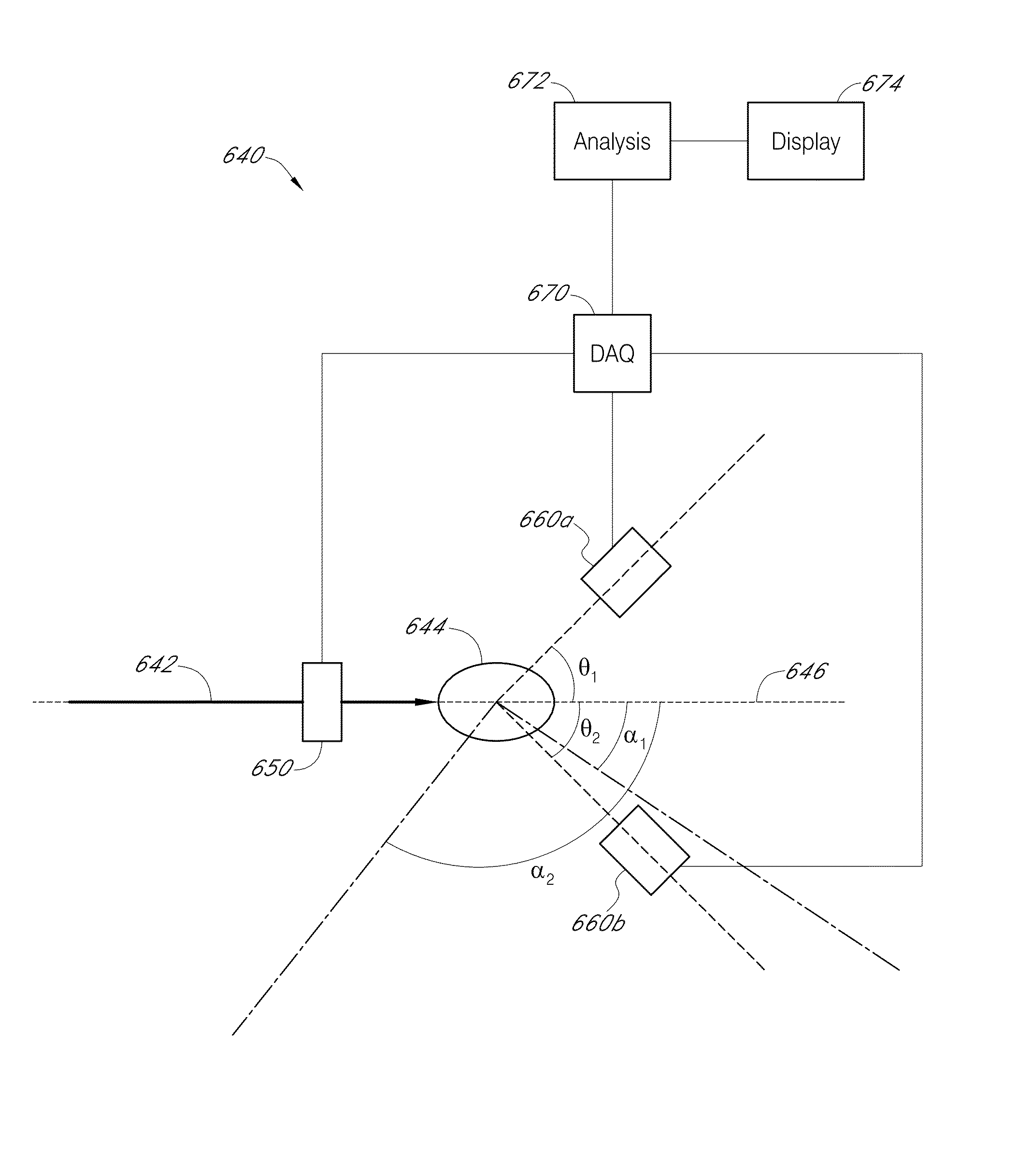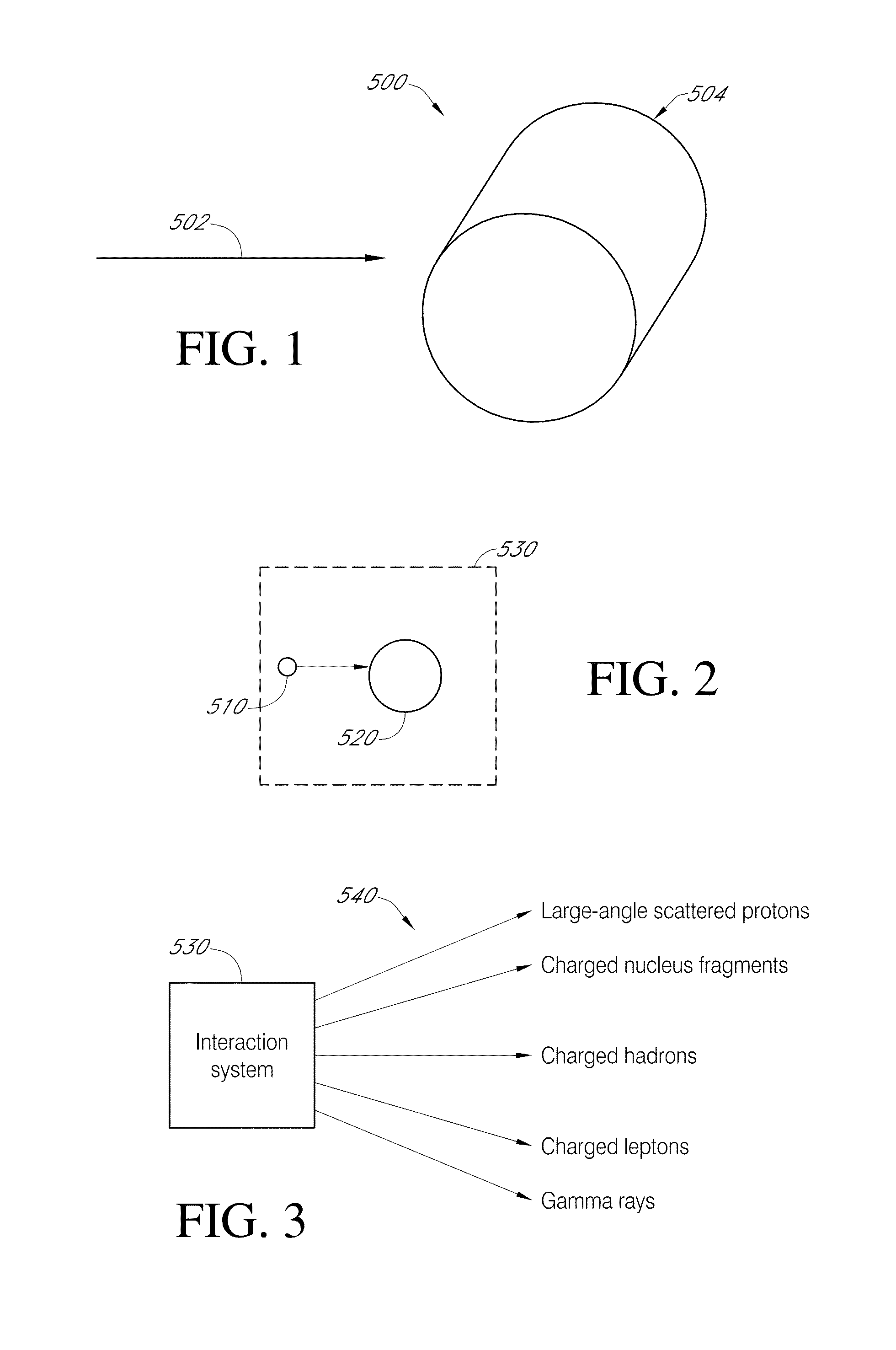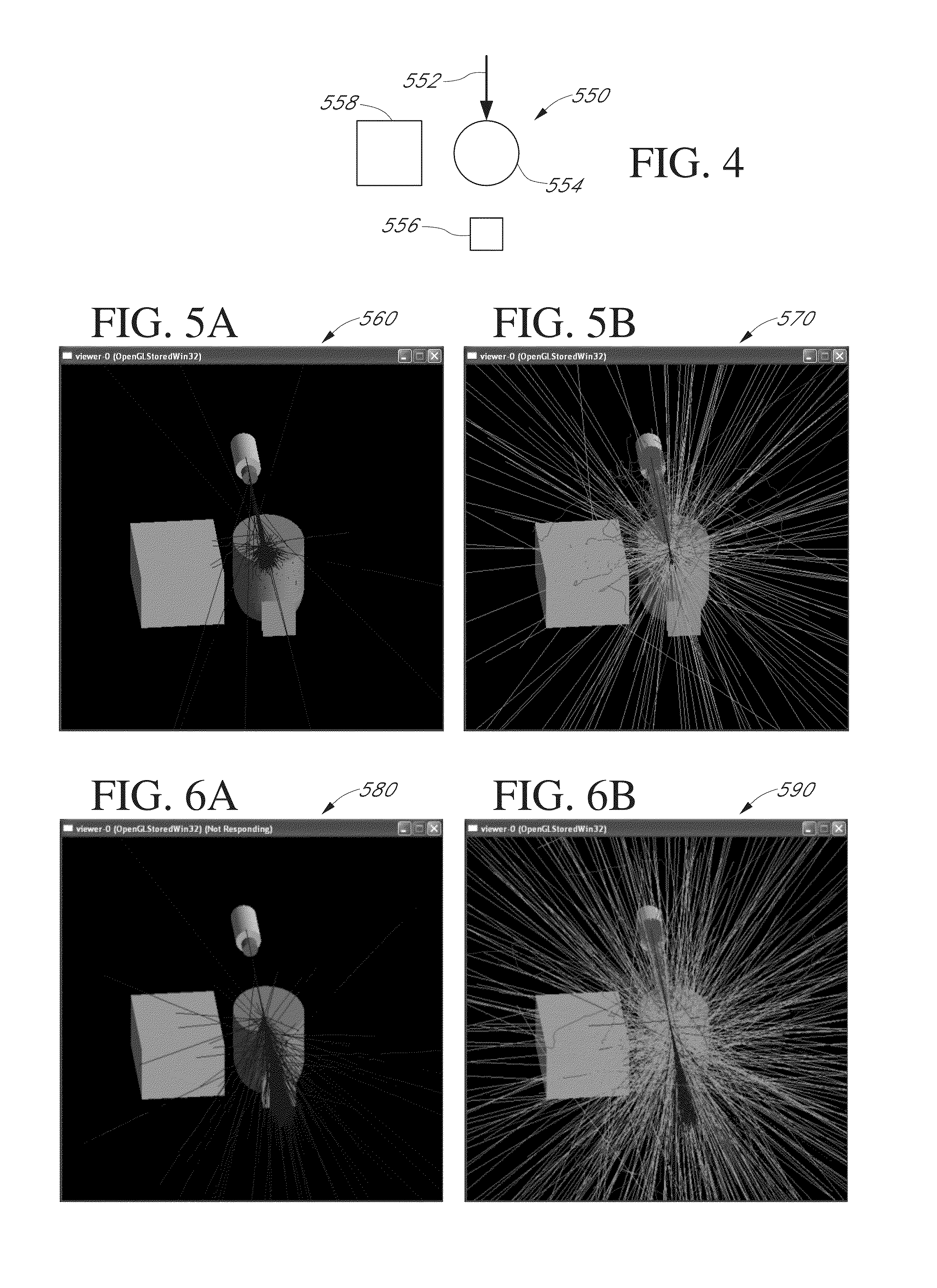Proton scattering analysis system
- Summary
- Abstract
- Description
- Claims
- Application Information
AI Technical Summary
Benefits of technology
Problems solved by technology
Method used
Image
Examples
Embodiment Construction
[0046]The present disclosure generally relates to utilizing detected products of certain types of proton-nucleus collision interactions. As described herein, such detected products can be utilized in proton-based therapy and / or imaging systems.
[0047]FIG. 1 schematically depicts a configuration 500 where a target volume 504 is subjected to a beam of protons 502. The proton beam 502 can be generated and delivered to the target volume 504 in a number of different configurations (e.g., average kinetic energy, average beam width, average number of protons per spill, etc.) by known devices and methods; and thus, further description is not needed herein.
[0048]In certain situations, the target volume 504 can be a tissue being characterized. Such a tissue can be part of a human patient. Although many of the examples described herein are in the context of therapy for and / or imaging of human patients, it will be understood that the tissue can also be part of a non-living animal, and the animal...
PUM
 Login to View More
Login to View More Abstract
Description
Claims
Application Information
 Login to View More
Login to View More - R&D
- Intellectual Property
- Life Sciences
- Materials
- Tech Scout
- Unparalleled Data Quality
- Higher Quality Content
- 60% Fewer Hallucinations
Browse by: Latest US Patents, China's latest patents, Technical Efficacy Thesaurus, Application Domain, Technology Topic, Popular Technical Reports.
© 2025 PatSnap. All rights reserved.Legal|Privacy policy|Modern Slavery Act Transparency Statement|Sitemap|About US| Contact US: help@patsnap.com



